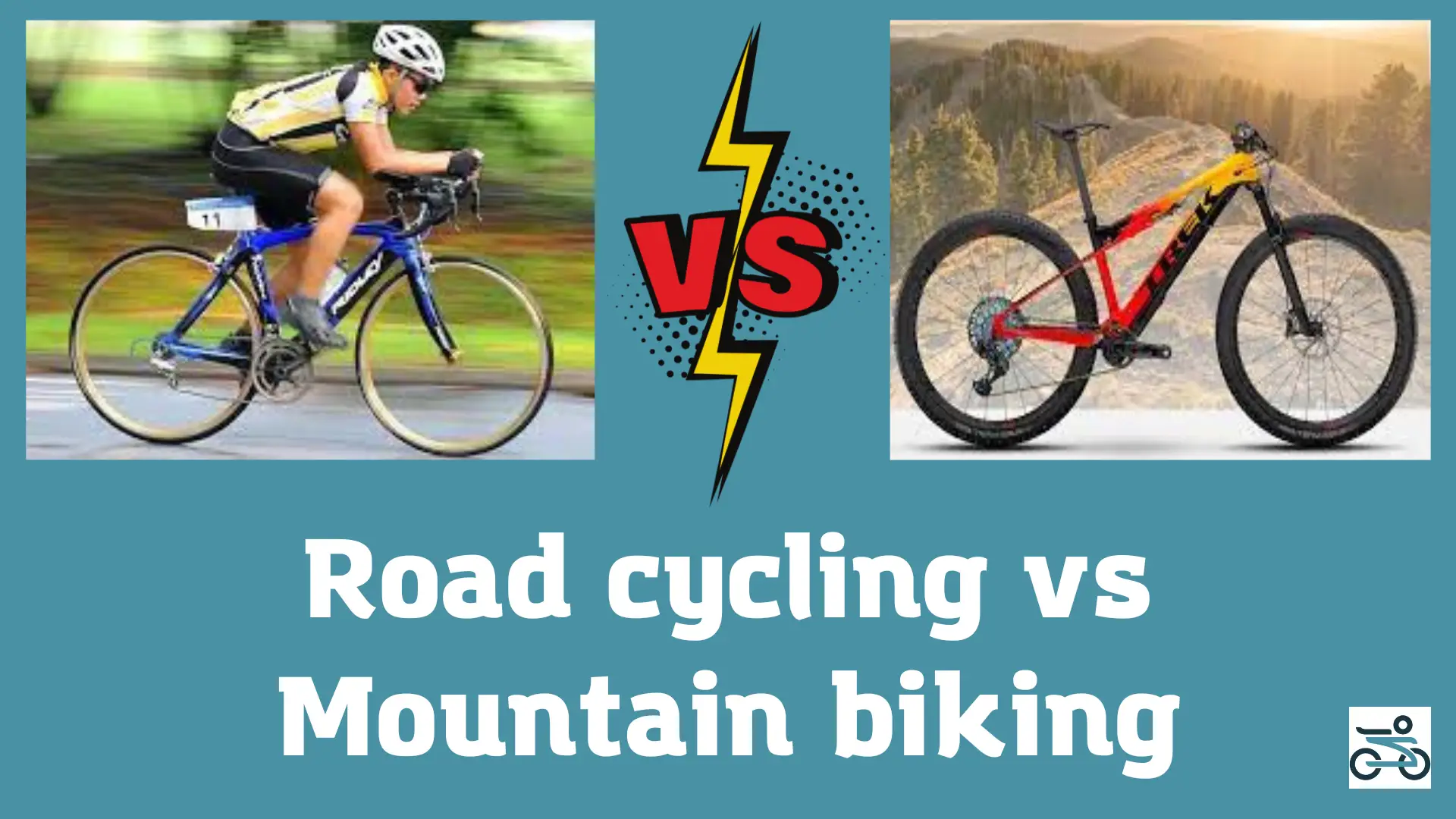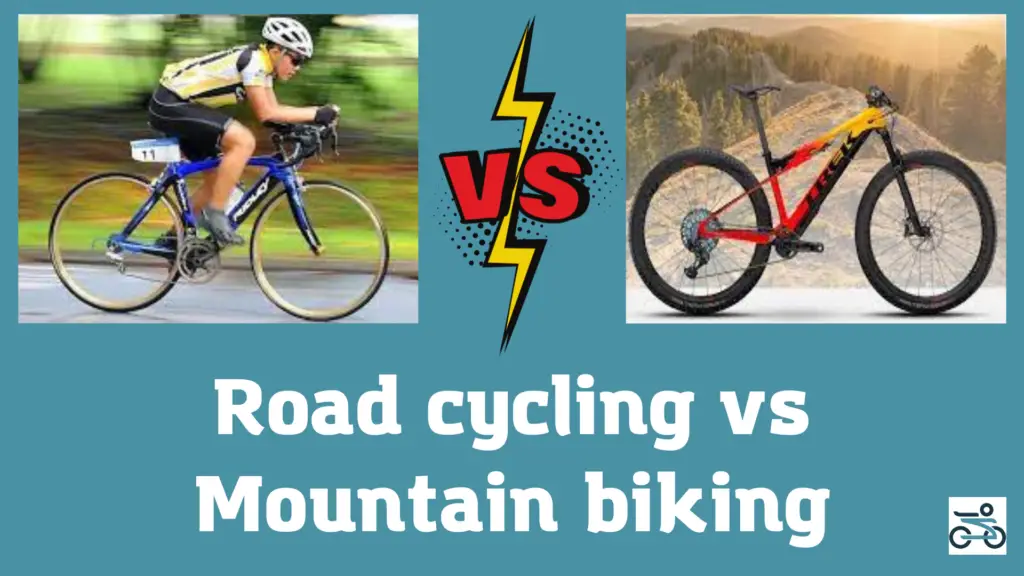
Many novice cyclists would be interested to know the different sides of bicycles, and especially mountain bikes and road bikes. It is these two different bicycles that are the most popular and are compared the most. In their structure and purpose, they are very different, ant it’s making a comparison even more interesting. The difference lies in a number of features, these are suspension systems, frame geometry, wheel width, steering wheel appearance.
If you carefully compare mountain bikes and road bikes, you will only find different aspects, not similar details or pieces. For most, the goal is to buy each bike precisely because of their differences. For professionals, road biking and mountain biking may overlap in cross-country biking. Such races combine rough terrain and road trips.
For which cases cyclists choose mountain biking vs road biking?
The comparison needs to begin from the basics, namely the purpose of the mountain bike and road bike.
What is the purpose of a mountain bike?

The main conditions for cycling are rough type of terrain and mountain bike trails. Such conditions are absolutely not suitable for road cycling.
Mountain bike wheels are large and wide, which greatly affects the speed of cycling on ordinary asphalt, which makes this bicycle meaningless for road race. In turn, for uneven terrain, such a bike will be ideal, while ride on uneven roads due to the correct structure of the bike mountain bikers maintain the correct riding position.
It is also worth remembering about full suspension mountain bikes and flat handlebars. Thanks to this, off-road terrain becomes more manageable. Also, because of these details, the ride becomes more comfy. Such structure features are especially important when driving on a single track with rough terrain.
Frame geometry also affects the comfort of mountain biking. The primary purpose of the frame is cushioning while riding and improved balance on particularly rough road sections.
Disc brakes and gearing ranges are designed to handle rough roads or trail riding.
What is the purpose of a road bike?

For road bikes, only flat surfaces with asphalt or just a hard surface are intended. Road bikers choose to ride ordinary city streets, park areas, mountain passes, dedicated bike paths or even steep hills.
The road bike is a light bike and very aerodynamic. The purpose of road cycling is to drive quickly in a straight line or uphill on hard ground.
The speed of riding a road bike is influenced by the details of the bike, namely the shape of the frame, handlebar.
How is a road bike versus mountain bike frame designed?
The frame of a bicycle is one of the most important components as it provides speed and cushioning.
Road bikes frame
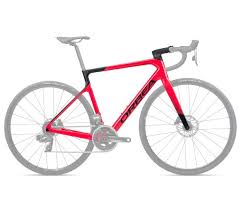
With road bikes, aerodynamics and speed are the top priority. In order to achieve this, the bike must be light in weight, but not lose stability. Compared to mountain bikes, frames are lighter and smaller, and have a slightly different purpose.
Road bikes have a longer top tube, mountain bikes have an order of magnitude smaller top tube. Because of this design, road cyclists are in an aerodynamic riding position. Due to this position of road cyclists, the bike picks up speed faster and wind resistance improves.
Also, the difference between road and mountain bikes can be found in the location of the “fork”. A road bike has a shorter front angle, which makes the fork steeper. Because of this, the bike has increased handling compared to mountain bikes. On mountain bikes, the angle of this fork is greater, this is designed to keep the cyclist’s center of gravity well when riding from a steep hill. Because of this, the front wheel of a mountain bike is farther from the frame and gives better control over the entire structure for road rider.
Mountain bikes frame

Mountain bikes are characterized by a completely different frame. It is much shorter, especially in the top tube. Due to this design, the controllability of the entire bike is improved, as the handlebars are located closer to the mountain biker.
Because of this design, the upper body is not in an aerodynamic position and you can’t reduce wind resistance. In this vertical position, the mountain biker is most suited for off road riding and sharp turns or steep climbs. Also, because of this frame structure, the center of gravity is in the center and low, which also affects the handling of the bike during mountain biking.
Frame comparison
From the information above, it can be concluded that the main difference between a mountain bike and a road bike is frame length, tube size, fork placement, and tube angle. These factors affect the position of the handlebars and the ability to control the maneuvers on the bike.
To sum it up, a road bike has a more offset fork as well as a larger tube which allows you to ride faster.
Mountain bike riding is another type of cycling. Because of this, the frame structure is completely different and affects other factors that improve the bike’s handling during mountain biking. Trails of a bike are larger compared to road bikes. Because of this factor, the bike is much more stable during the ride. Thus, downhill mountain biking off road is more controlled with less risk of falling or losing control of the bike.
Mountain bike gears

If we consider most mountain bikes, then they have 1x set-up in most cases. Thus, we can conclude that there is one front chainring. This design of the bike makes it less likely to break the chain and also removes the need for a heavy front derailleur.
Due to the nature of the terrain off-road, mountain bikes need a large rear cassette. Also, this cassette should have a considerable number of gears. These cassettes have another name, they are called a dinner plate. This item got its name because of its size. You can buy a new bike with 12 speeds, which is the average for mountain bikes. This configuration is also typical for 1x set-up. Such a structure is designed for cross country ride.
Gears for road biking

A road bicycle has a much wider range of options when it comes to gears. For example, there are options for bikes that are compact in size and have ready-made race setups.
Also, these bikes are different in that they have two front chainrings and a derailleur. Bicycle manufacturers offer options up to 11 speeds. The bikes also have a lot of kits with differences in tooth sprockets, on average the number can be in the range of 11-28 tooth sprockets. But there are more options.
Brakes for mountain biking
Mountain bikes have disc brakes. This type of brake is due to the fact that these bikes are designed for cross-country ride. Disc brakes are very massive, with high power and efficiency of brake levers. Such brakes will be effective on wet roads or on uneven terrain. Extreme mountain biking also involves this type of brakes. These oversized brakes increase braking speed.
Brakes for road cycling
Very often road bikes were equipped with rim brakes. But now things are starting to change. More and more manufacturers believe that disc type brakes are more effective for road biking. Now more and more often you can see a road bicycle with disc brakes, and not with rim brakes.
Disc type brakes used to be ineffective due to the high weight, low level of aerodynamics and safety level. But now progress in terms of manufacturing technology has allowed this type of brake to become effective and due to their use for road cycling.
Rim brakes are still used for road biking, but not as often. This type of brake is light weight but not as effective in the rain or on wet roads. Also, these brakes have less power and no modulation.
If road bikers choose rim brakes, it’s because of the lower price and easier maintenance. Also, many additions, for example, bike stands are made specifically for bikes with this type of brakes.
Which tires and wheels do you need for mountain biking?
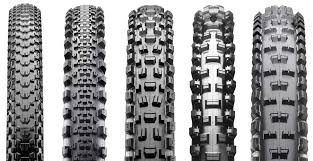
For mountain biking, massive and wide tires are a priority. This type of tire is needed for reliable riding on rough roads and mountainous terrain, mountain bikers will be able to ride longer and more comfortably.
The structure of the tires is designed to ride over rocks, holes, tree roots. In order to drive on such surfaces, you need good grip between the tire and the surface. Also, due to their structure and thickness, tires are resistant to minor punctures. This puncture protection comes from strong treads and sidewalls.
The protectors and their pattern are quite voluminous, as they are intended for driving in mountainous areas. If you compare tires and their treads with road bikes, they will differ significantly. This is due to the fact that these shiin have completely different tasks and functionality due to the terrain.
Which tires and wheels do you need for road biking?
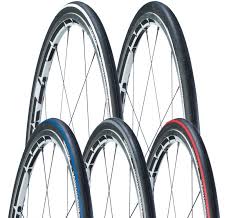
Road tires are not characterized by large and massive tires and treads.
Narrow tires are considered the most functional. For example, mountain bike tires are many times larger and measured in inches, not millimeters. Even the widest road bicycle tire will be smaller than the narrowest mountain bike tire. The average tire range for road is 20-38 millimeters, for example, the narrowest mountain bike tire is 2 inches, which is 50 millimeters.
Also in road bicycles tires the pressure is higher, it is 60-100 pounds per inch. This pressure is due to the terrain on which the cyclist rides. Mountain biking doesn’t require such high tire pressures, around 20 to 35 psi. Such indicators are also due to the terrain on which the bike rides.
What kind of suspension does a mountain biker need?
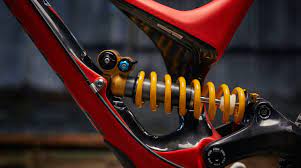
If we compare mountain biking vs road biking, then there is a very significant difference, it is the suspension. Mountain bikes have suspension, a detail that is very rare on road bicycles.
Mountain bikes are characterized by two types of suspension, namely full suspension and hardtails. A hardtail is that suspension that is only in the front, that is, there is no rear suspension. This front suspension is located in the fork. Due to the lack of suspension, hardtails are an order of magnitude lighter. Because of this, hardtails are chosen for short track or racing on unforgiving or forgiving terrain.
If the bike has full suspension, then it is in front and behind the bicycle. Such bicycles are more comfortable to ride on uneven surfaces, and it also increases the level of control over the entire structure of the bicycle. Also, the weight of such bikes is an order of magnitude greater than that of hardtails, due to the larger number of suspensions. Despite their weight, such bicycles are much more reliable for riding on muddy terrain.
Drop bars for road bicycles
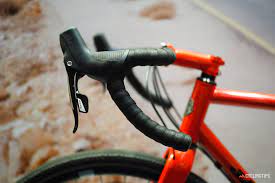
Externally, the bikes are very different handlebars. Road bicycles are characterized by drop handlebars. Such a steering wheel has a curved shape, which allows you to place your hands in three different positions. These three positions are: top, drop, hood. In the hood position is the brake lever. This position of the brake is due to the fact that cyclists often place their hands in this position. Hands are placed on the drop during high-speed driving or racing. And tops are needed for the normal pace of riding.
Flat bars for mountain bicycles

Mountain bicycles have flat handlebars. Due to its structure, on such a bicycle, the arms can only be located in one position. Also, the brake and speed selector is in the same single position.
These handlebars have a wider size, which affects the level of bicycle handling. Such handlebars are the most comfortable for tight turns and technical singletrack.
How is a cyclist positioned on a bicycle?
Cyclists are located completely differently on a mountain and road bicycle.
On a road bicycle, the cyclist is in a more extended position with the angle of the hips closed, and the cyclist is also in a leaning position.
Mountain bikers are in a vertical position, due to the short frame and the smaller angle of this frame. Despite the vertical position on a mountain bicycle, comfort will not be lost due to large tires and good suspension.
If we consider endurance road bicycles, then their design is not so aerodynamic. This type of bicycles was created not for racing, but for comfortable trips over long distances. The cyclist is in a position close to vertical.
Is mountain biking harder than road biking?
Mountain biking is more complex than road biking. In this type of cycling, not only the muscles of the legs, but also the arms are involved. This phenomenon is due to the fact that the cyclist makes a constant effort due to the terrain on which he rides. Also, these bikes are heavier and require a little more effort to control them.
Is road biking better than mountain biking?
Road biking and mountain biking are completely different. Each cyclist chooses cycling for himself, depending on what goals he pursues.
Does mountain biking burn more calories than road biking?
Mountain biking does burn more calories. The reason for this is the terrain on which the cyclist rides. Muddy terrain requires more pedaling effort.
How much easier is it to ride a road bike vs mountain bike?
A road bicycle is easier to ride because of the terrain it is designed for. Of course, riding on a straight surface will be easier and less traumatic.

